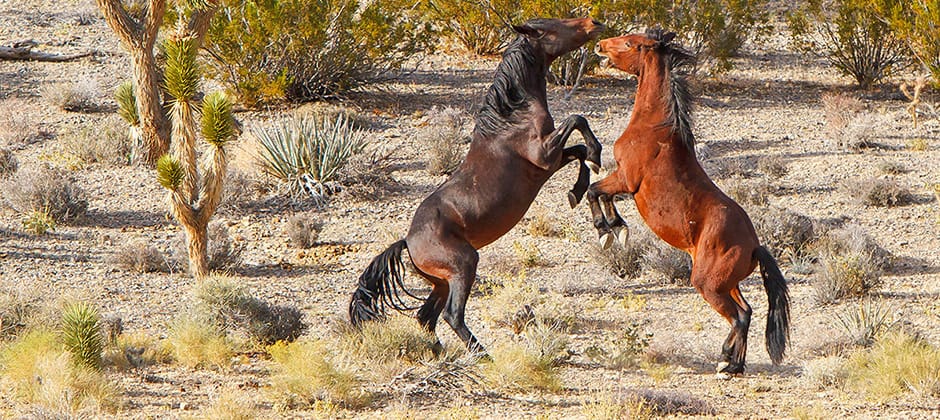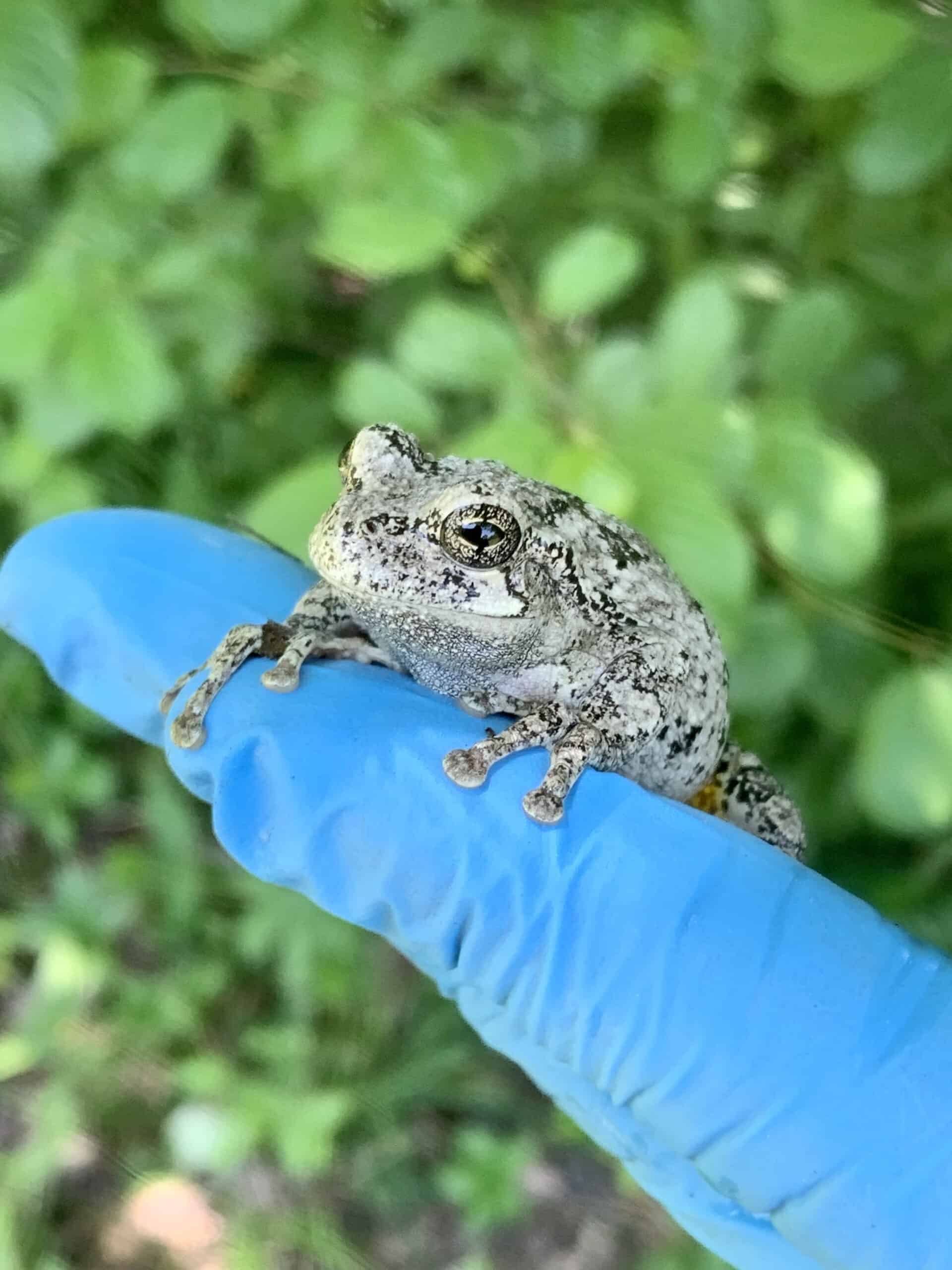Share this article
Can there be common ground on wild horses?
When it comes to managing wild horses on public lands in the West, it’s hard to find common ground. Proponents thrill at the sight of free-ranging horses, and they appeal to concerns about animal welfare to protect them. Critics point to the ecological damage that the invasive species can do the arid landscape and to the other wildlife that share it. All sides of the argument can get emotional.
“I think the piece that resounds with everybody is, no one wants to see horses die of starvation and dehydration,” said TWS member Erik Beever.
Are there ways to achieve that, and to manage wild horses on Western lands, that will get various interests on board? It’s a question that Beever, a research ecologist with the U.S. Geological Survey Northern Rocky Mountain Science Center in Bozeman, Montana, raises in a perspective published in Biological Conservation.
The challenges confronting wild horse management run deep, according to Beever and his co-authors, Lynn Huntsinger, of the University of California, Berkeley; and Steven Petersen, of Brigham Young University. Solutions, they say, may come from the realm of social science as much as biology.
“There’s a very broad diversity of user groups,” Beever said. “Everything from hunting groups, to folks that have to deal with threatened and endangered species, to state and federal agencies monitoring water quality, to livestock producers, to conservation advocates, to rural landowners, to those who love the enigma of the ‘Wild West’ and its horses. The power and charisma of horses are two characteristics that horses have that facilitate them being deeply appreciated by humans. They’ve also been used in human societies for millennia. There’s a strong connection there.”
But there’s also a strong connection to changes horses can bring to the environment. The authors note that according to past research, the list of alterations that horses can bring to arid landscapes is long, from soil degradation to vegetation loss to reducing native ungulates, small mammals and reptiles.
Removing the horses entirely isn’t much of an option. The 1971 Wild Free-Roaming Horses and Burros Act calls for them to remain on the landscape. But management options, constrained by lots of other laws and regulations, are limited. Grazing regimes that govern domesticated livestock use generally can’t be implemented. Neither can hunting options that are used to manage wild ungulate populations.
The two means of controlling population sizes are immunocontraceptives and removals of animals to off-range holding facilities, called gathers, and both have drawbacks, Beever said. Gathering up the horses is expensive, as is caring for tens of thousands of animals in holding facilities for the remainder of their lives. Contraceptives, usually fired from dart guns from the air, are difficult to apply and limited in their effectiveness.
“You only have two tools to provide solutions,” he said, “and neither of those are particularly easy to implement nationwide.”
Their paper lays out a series of “mismatches” that make managing wild horses so hard. Managers seek target population numbers that the ecosystem can support, but conditions on the ground can change in a matter of days or weeks. The political process can demand fast answers, but science takes time. And in the court of public opinion, science doesn’t necessarily win out.
Solutions to the wild horse dilemma, the authors argue, are caught between “contradictions, constraints and mismatches.” To work through them, they suggest that tools from social science may be as useful as those from biology. Decision-making techniques, including structured decision-making and other tools, may be the most useful ways to reach compromises on what can seem like an issue with little common ground.
“Society is going to have to increasingly be making hard choices,” Beever said. “They’ve always been hard, but the choices become more limited, more difficult and more vexing over time.”
Header Image: Solutions to managing wild horses, authors argue, are caught between “contradictions, constraints and mismatches.” ©James Marvin Phelps








